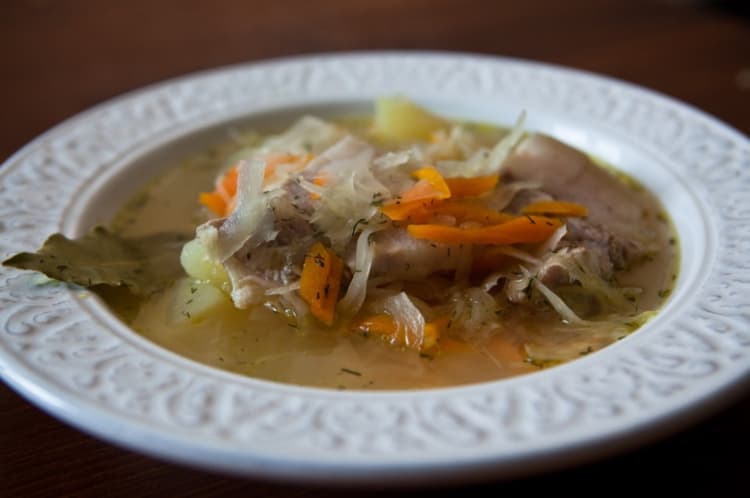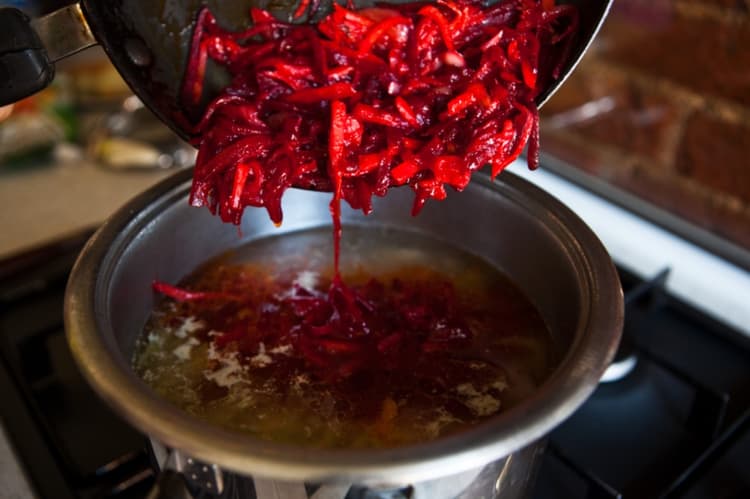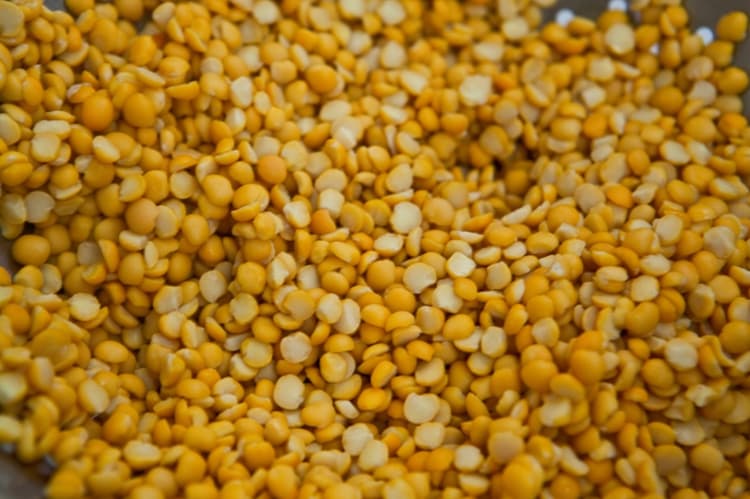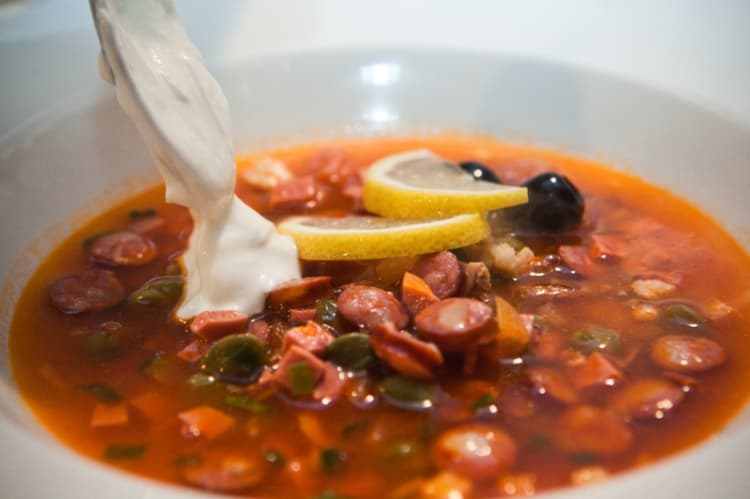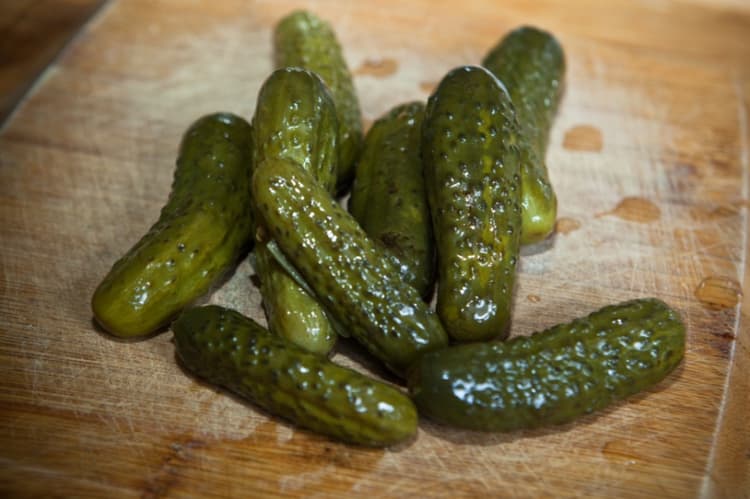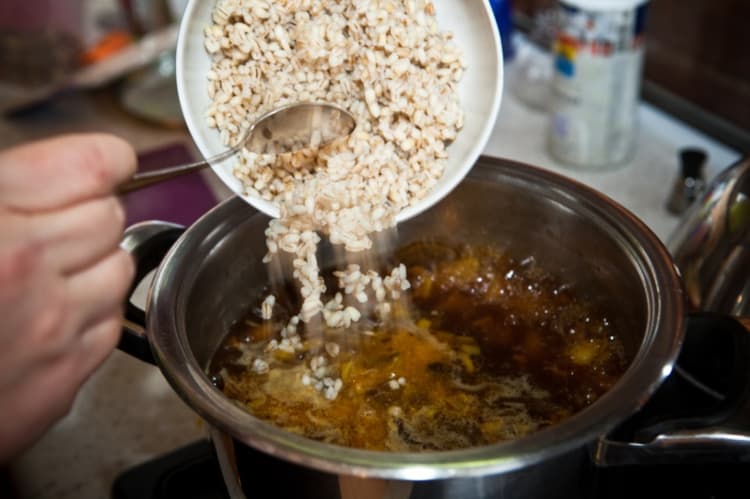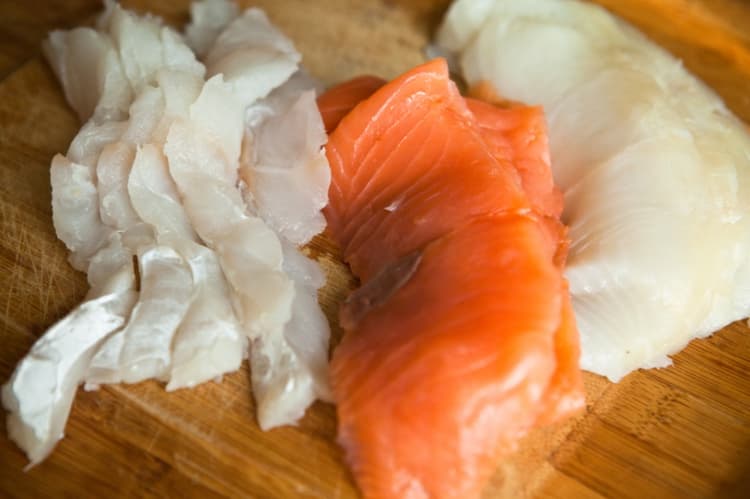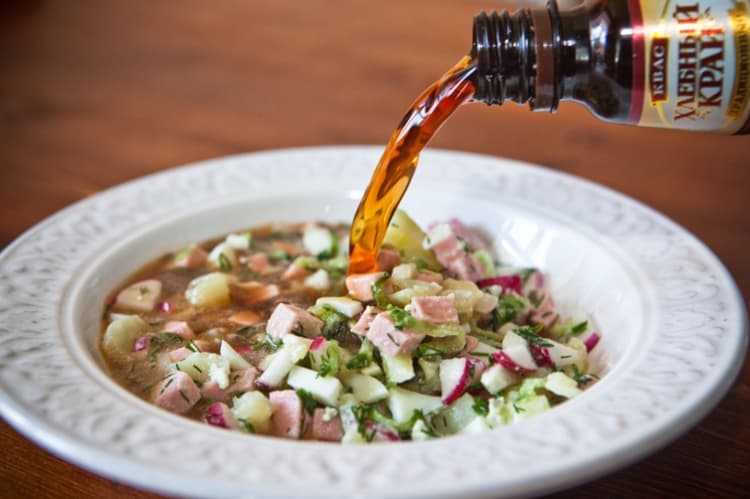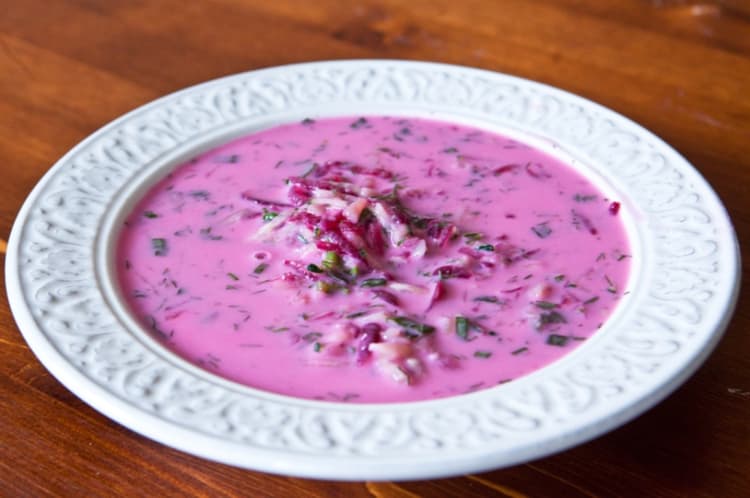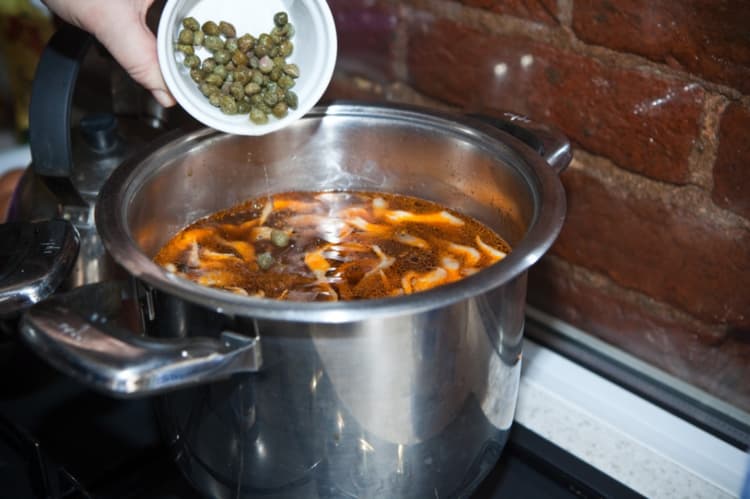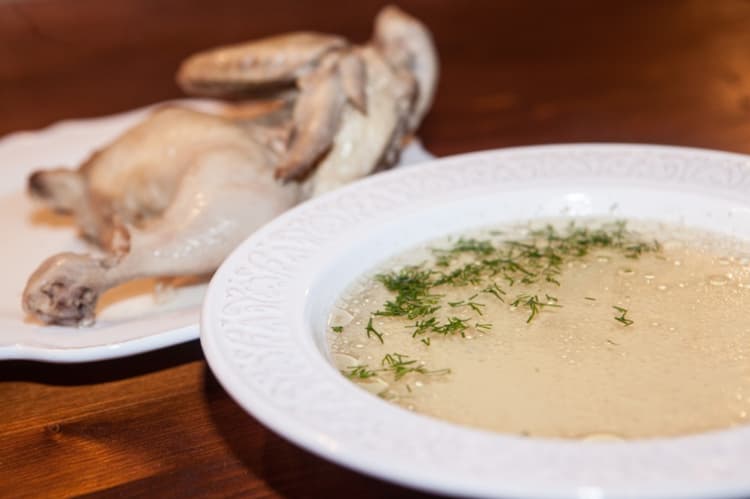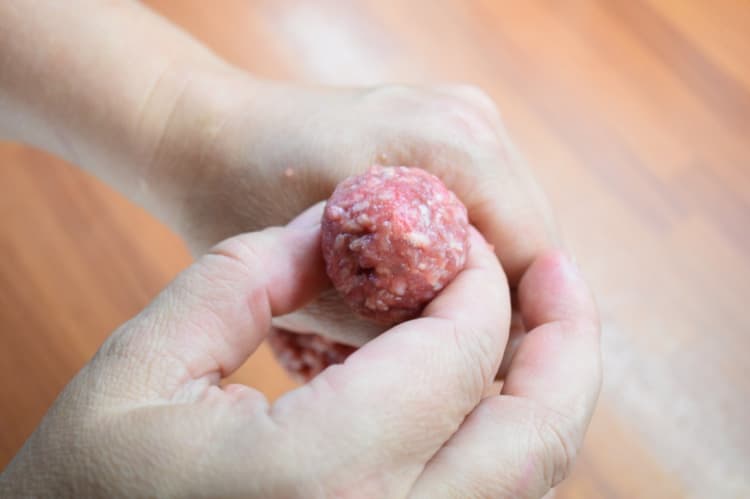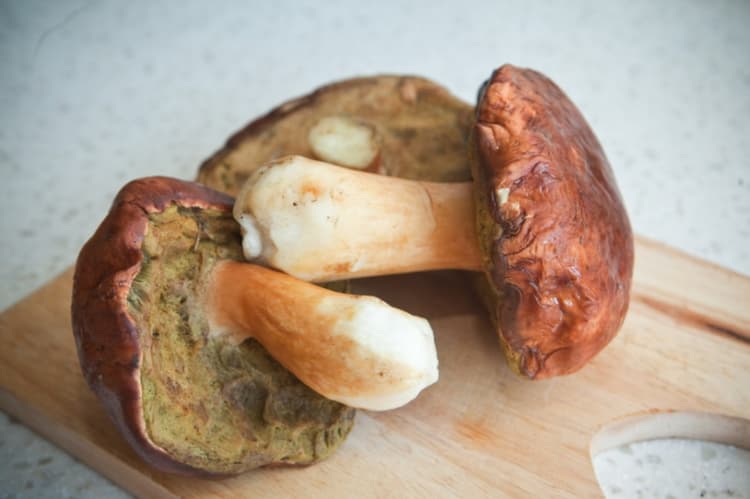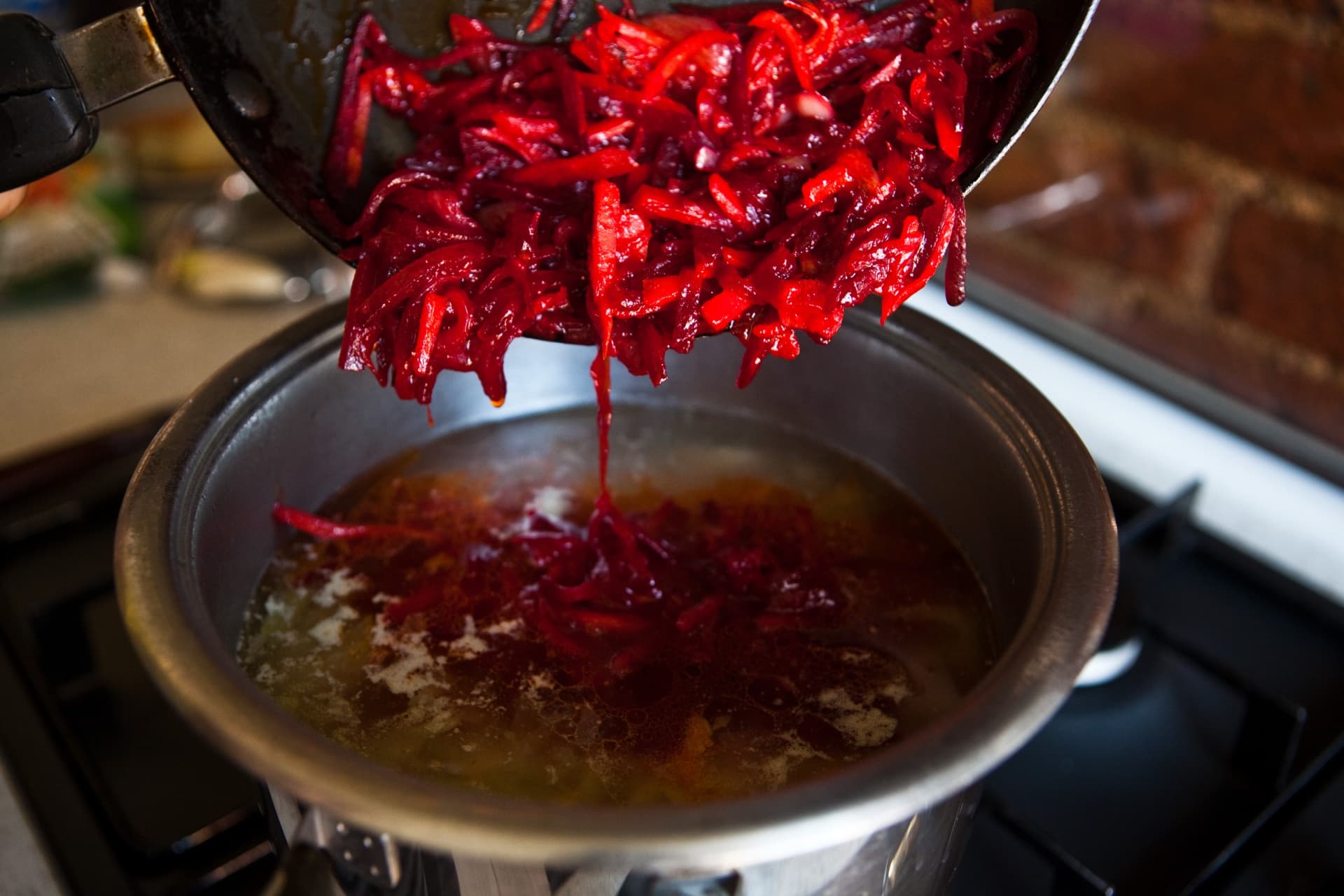
Borsch
Schi and borsch are quite similar, however, schi is a typical Russian dish while borsch was adopted from the Ukrainian cuisine.
Serves: 8-10
1 lb beef with a bone
1 lb green cabbage
4 medium potatoes
1 large carrot
1 large onion
3-4 garlic cloves
2 medium beets
2-3 tablespoons tomato paste
2 teaspoons salt
4 oz vegetable (sunflower) oil
A few fresh dill sprigs
6 oz sour cream
Schi and borsch are quite similar, however, schi is a typical Russian dish while borsch was adopted from the Ukrainian cuisine. They're easy to tell apart: while both are made with the fresh cabbage or sauerkraut, borsch also has beets among its ingredients. There can be variations in the vegetables that go into borsch depending on seasonal availability; the cabbage and beets are the only staples.
You can add fresh tomatoes or tomato paste, finely chopped fresh or canned sweet pepper, yellow or spring onions, carrots, garlic and fresh or dried herbes (dill, parsley, bay leaf). Usually this soup is made with a meat or chicken broth, but there is a light alternative made solely with vegetables (perfect for fasting).
Borsch is served hot in bowls with 1-2 tablespoons of sour cream and finely chopped fresh herbes added to each serving.
The taste is best described as sweet and sour. The sweetness of the soup comes from the beets, while the sauerkraut contributes the sour element. If making the borsch from the fresh cabbage you can add 1 tablespoon of white vinegar a few minutes before the borsch is ready – if you wish for more of the sweet and sour contrast, of course.
Below is the recipe for borsch made with the fresh cabbage and beef broth.
Rinse the meat thoroughly and blot with a paper towel.


Place into a large pot and cover with 1 gallon of cold water. Add the salt and put on the stove. As soon as the water boils, carefully scoop away all the scum that rises to the surface.

Then turn the heat to low and cook for 1 hour.
While the broth is cooking, peel all the vegetables: potatoes, carrots, beets, onions and garlic. Cut the potatoes into large cubes or strips.
Slice the onions into semicircles. Julienne the beets and carrots and keep them separate to preserve the color of each.




Finely shred the cabbage (cut into thin strips).

When the broth is ready, strain it and pour back into the pot.

Separate the bones from the meat. Cut the meat into medium pieces and return to the broth; discard the bones.
Add the cabbage and place the pot back onto the stove over medium heat.



Cook the cabbage for 10-15 minutes after the soup boils and then add the potatoes. Continue cooking for another 15 minutes.


Pour the oil into a stew pot or a deep thick-bottomed frying pan and place on the stove. As soon as the oil warms up, add the onions and carrots.

Sauté the vegetables for 10 minutes stirring periodically with a wooden spatula.
Move the vegetables towards the edges of the pan and place the cut-up garlic in the center.

Cook for about a minute, then stir all the vegetables together and move to the edges of the pan again.

Add the julienned beets into the center of the pan and continue to sauté all the vegetables separately for another 5-8 minutes.

After that, mix everything together and continue cooking for 2-3 minutes more.

Add the tomato paste to the vegetables in the pan.

Mix well and cook for a couple of minutes.

Take off the stove.
After the potatoes have been cooking for 15 minutes as mentioned above, add all the vegetables from the pan to the soup pot and bring to a boil.



Cover the soup and take off the stove.
The key secret of a great borsch is to allow the vegetable flavors to blend. Let the borsch sit covered for at least 30-40 minutes, and only then serve.

Serve with a dollop of sour cream and finely chopped fresh dill in each bowl.




